All about metal pergolas
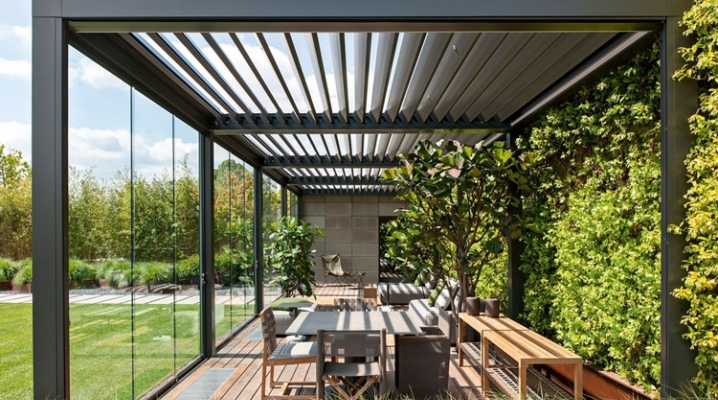
Pergola means an extension, a canopy. Initially, it was used only as a support for climbing vegetation, bushes and vineyards. Nowadays, it is considered a place where you can relax in the shade of plants and hide from direct sunlight.
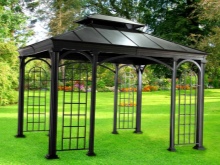
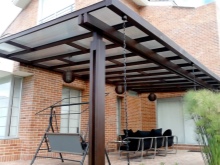
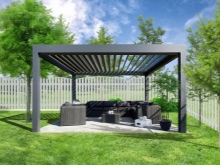
Features and purpose
A metal pergola is called a special net for climbing plants. It looks like a type-setting structure, consisting of garden arches, which are interconnected by crossbeams, beams. This design has a refined and neat look. The presence of a pergola on the territory can decorate the landscape of a country house or summer cottage.
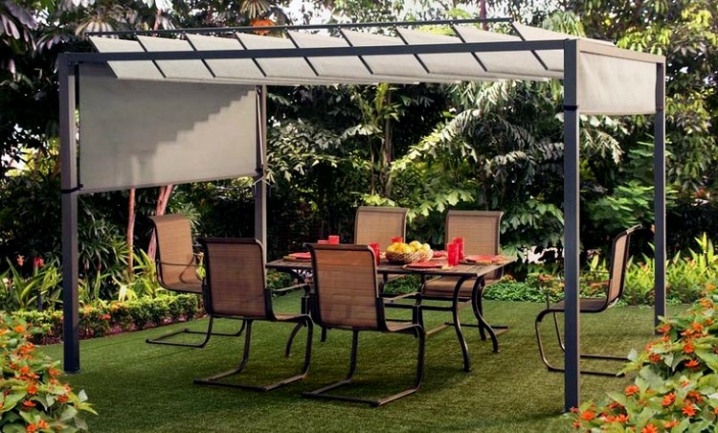
This structure can be attached to the building or have the appearance of a separate structure. From pergolas, you can create a terrace, a corridor or enclose the pool with it. Their designs amaze with a wide variety, they can even look like real works of art.

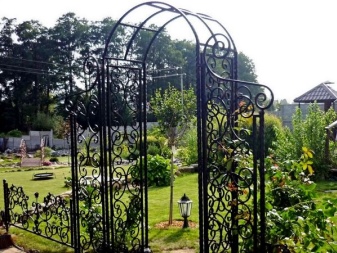
Let's list the functions of the pergola.
- Decorative. The structure is used as a decoration of the territory adjacent to the house due to the shape and the presence of attractive vegetation on it. Such an arch is capable of creating vertical zones of green vegetation.
- Practical. The pergola makes growing and harvesting grapes much easier.
- Utility room. The design hides garages, outbuildings that do not match the overall design of the area.
In addition to all of the above, the pergola divides the site into several zones, serves as an option for the design of entrance groups, such as a gate or a wicket.
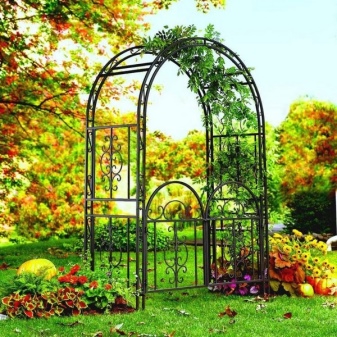
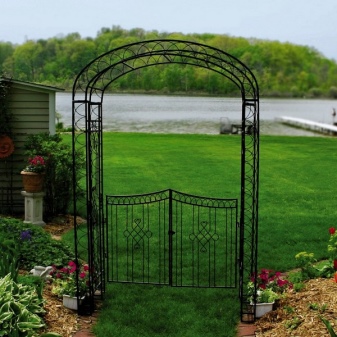
The advantages of a pergola include simplicity of design, accuracy and practicality. The disadvantages of the structure include the lack of protection from bad weather, as well as whimsical care.
Description of species
Depending on the placement option, iron pergolas for the garden are wall-mounted (or stationary), as well as free-standing.
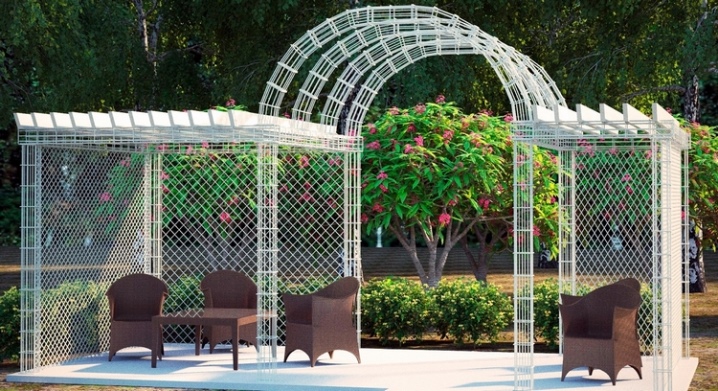
According to the configuration, metal pergolas are classified as follows:
- awnings - they are able to provide reliable protection from the scorching rays of the sun, they are often mounted over playgrounds and places intended for parking cars;

- visors - such structures are able to decorate the walls, save from the sun, and also significantly reduce the thermal load on the building;
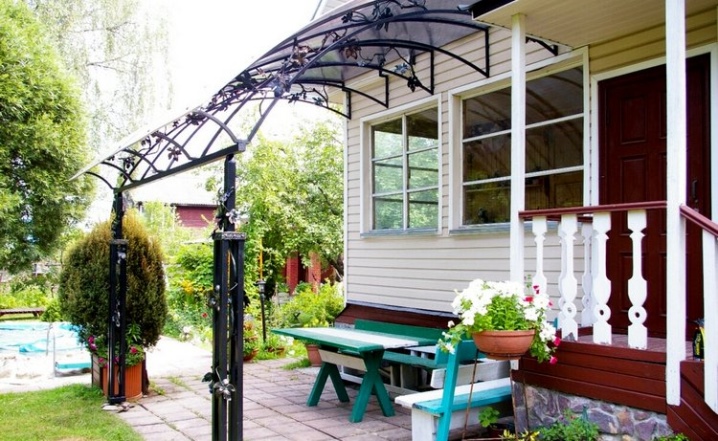
- awnings are considered a good and practical option for protecting vehicles;
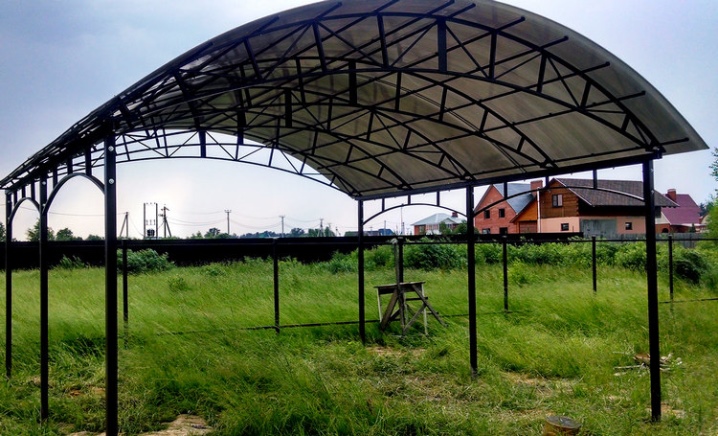
- gazebos - such pergolas are very similar to ordinary covered buildings, however, due to the lattice roof, they do not protect from precipitation;
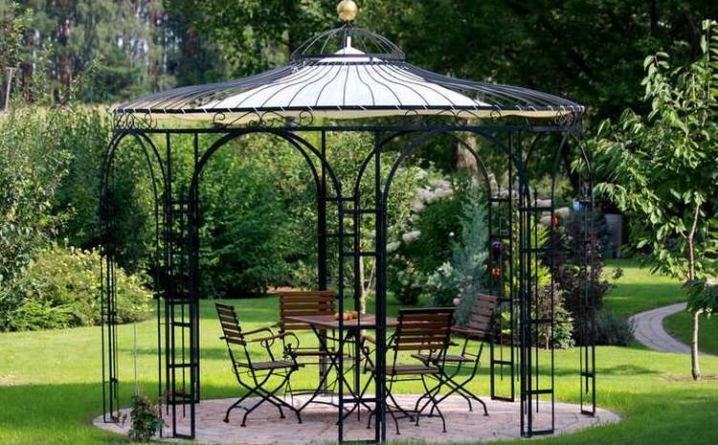
- screens used for zoning a territory, decorating it or as a fence, with their help you can create a quiet, cozy corner;
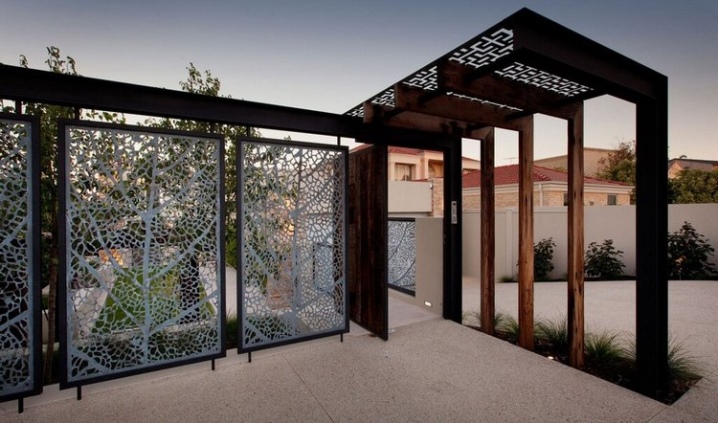
- tunnels - arched structures of this type are able to close paths and paths from the sun, forming an aesthetic passage between buildings;
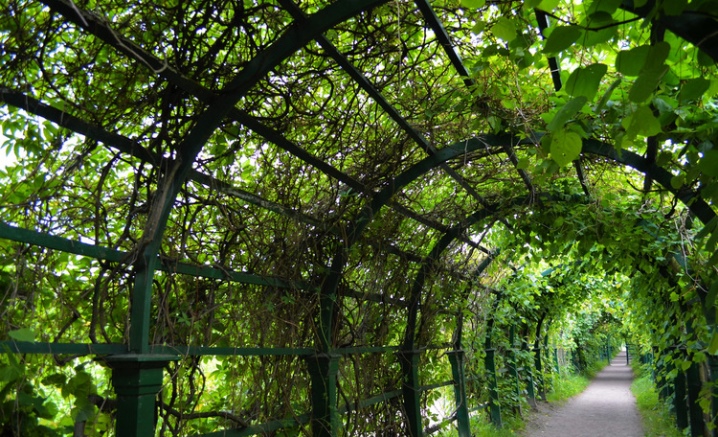
- benches assist in creating a cozy corner for relaxation, such structures take up little space and are quite simple to manufacture.
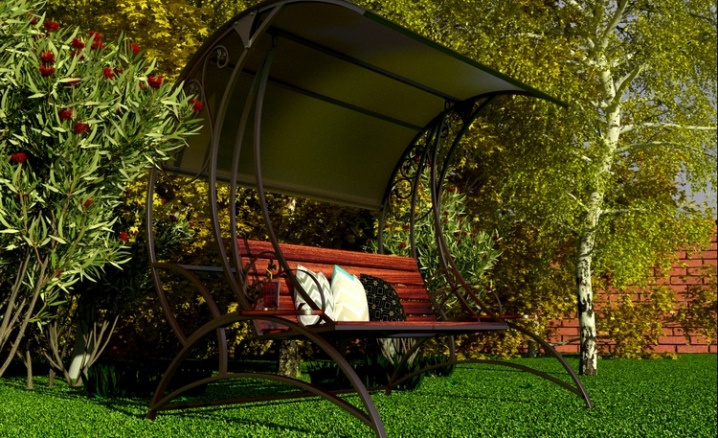
Currently, you can find pergolas in the form of an arch for flowers, clematis and a structure with a swing.
When choosing one or another type of pergola, it is worth considering its combination with the style of the garden and the territory as a whole.
Style directions
Several centuries ago, pergolas were monotonous, but today they can be decorated in a wide variety of styles.
- Classic. Designs in this style look strict, restrained. The frame consists of a lattice covering and is characterized by minimalism and elegance at the same time.
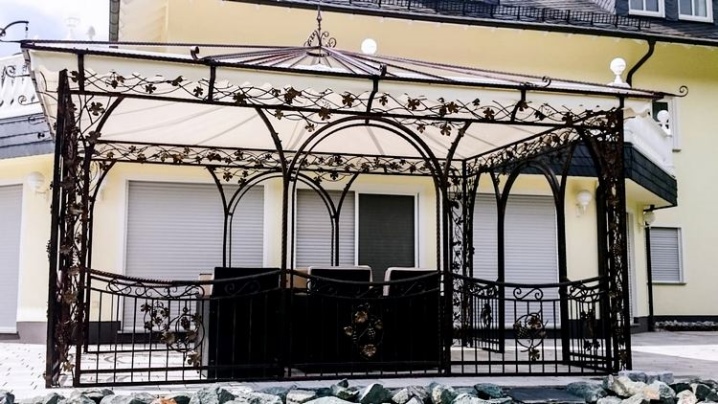
- Rustic. Such products have a geometrically regular shape, and are also characterized by functionality and naturalness.

- High tech. This style is reminiscent of modernity and the development of technology. Something cosmic, original, but functional at the same time can be observed in the structure.
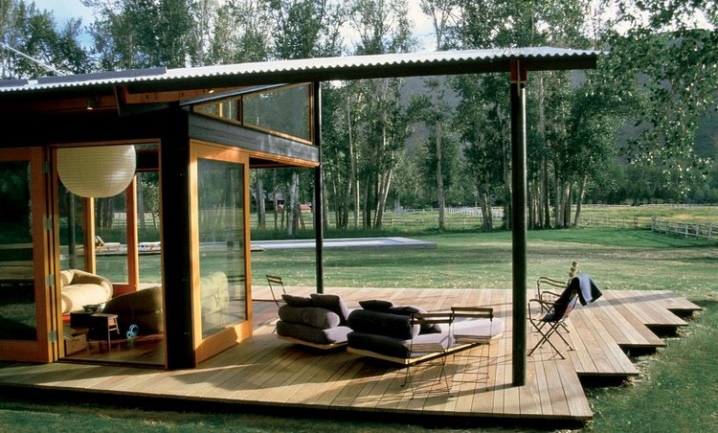
- East. The oriental-style pergola is characterized by a pyramidal roof, concave walls, and red and brown colors.
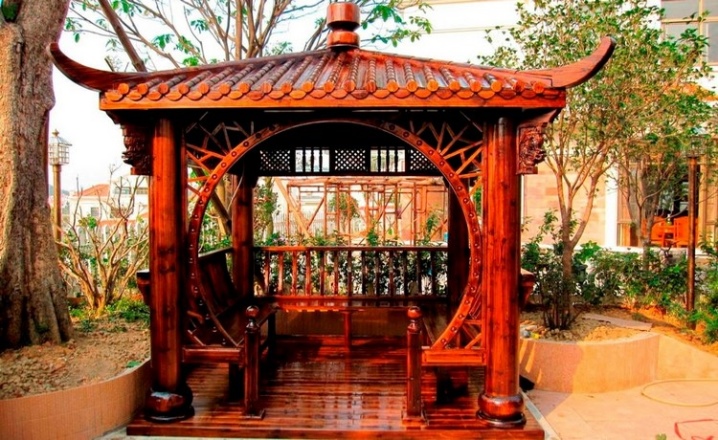
- Modern. These metal arches are quite functional and sophisticated at the same time.
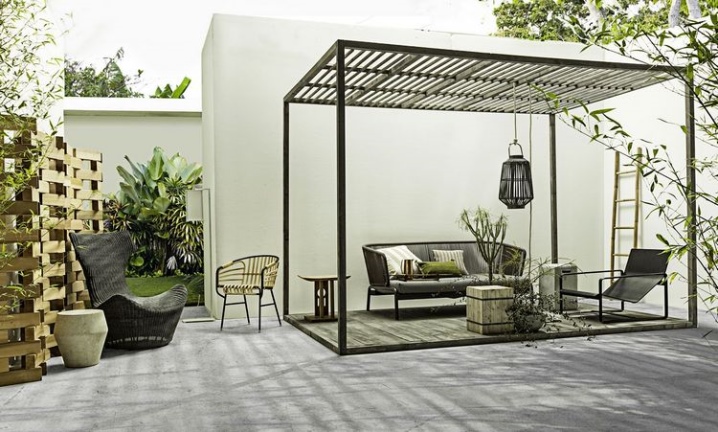
- Chalet Is a style characterized by reliability, practicality and versatility.
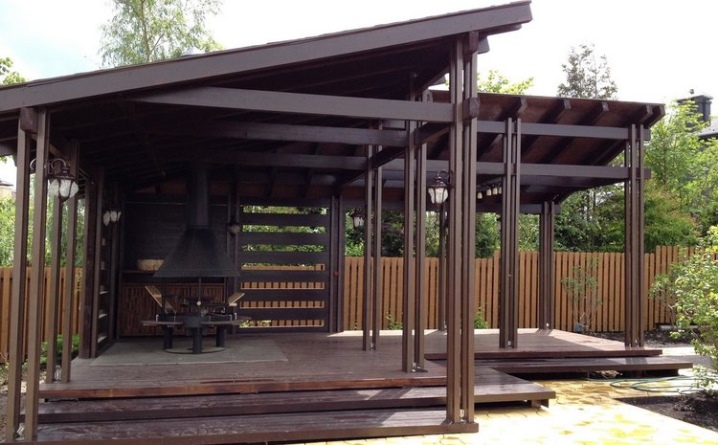
How to arrange?
The pergola will look great in any corner of the territory of a country house. However, experts recommend a more rational arrangement, namely above the garden paths.
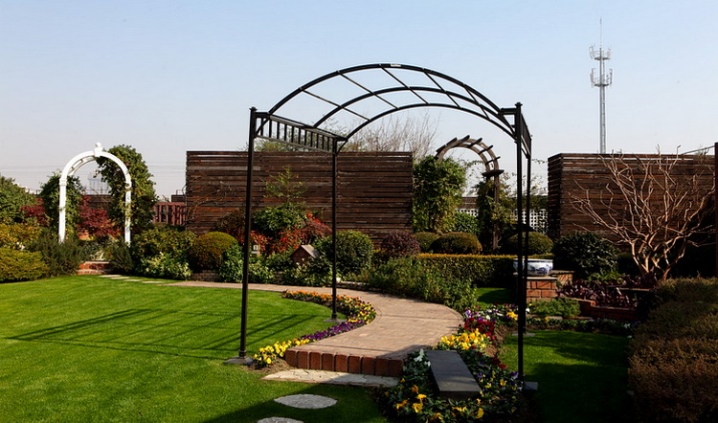
Since the installation of a structure is a rather responsible event, when choosing a site for its placement, it is worth considering the following points:
- a sufficient amount of space for the location of the pergola;
- the type of soil that plays an important role in the growth of plants that will be planted at the arch;
- good illumination;
- species of flora representatives growing in the neighborhood.
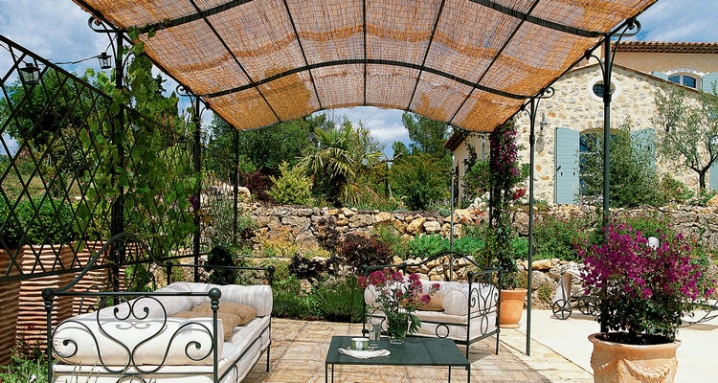
It is also very important to decide on the function of the pergola.
- Support for plants. In this case, the area where the pergola will be located should be illuminated by the sun for most of the day. The shade from the building can cause some difficulty in planting.
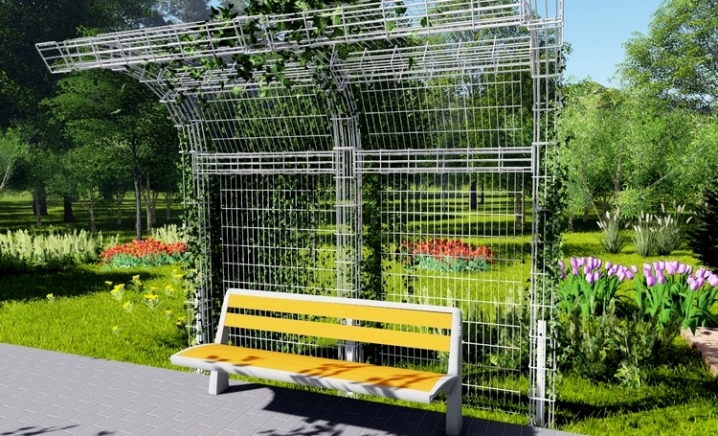
- Organization of a place for rest, decoration of the site. To equip a natural, beautiful, green gazebo, it is better to choose a place where there are no trees.
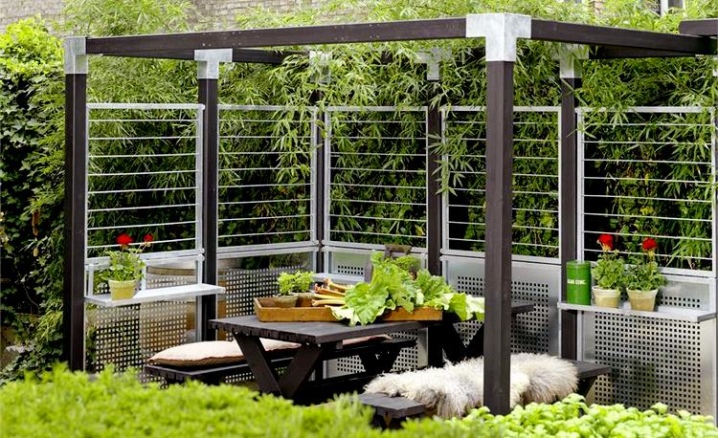
Examples in landscape design
Metal pergolas can have interesting forms of construction. They are often made from pipes with different diameters and lengths. Portable options are very popular, as they can decorate any part of the site. Structures with forged elements look very beautiful on any part of the suburban area.

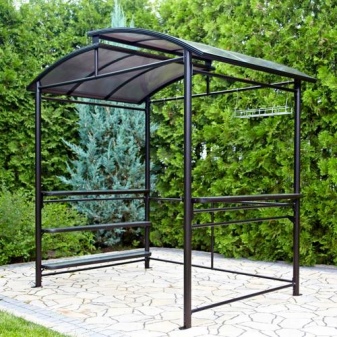
In order to add attractiveness to the landscape, do not plant a pergola with one type of vegetation. The structures with seasonal changes in the flora look quite interesting. A culture like maiden grapes grows very quickly, it is capable of braiding a pergola of even the most complex and bizarre shape. As a result of such a planting, you can get a bright green gazebo for relaxation, which changes its color to burgundy in autumn.
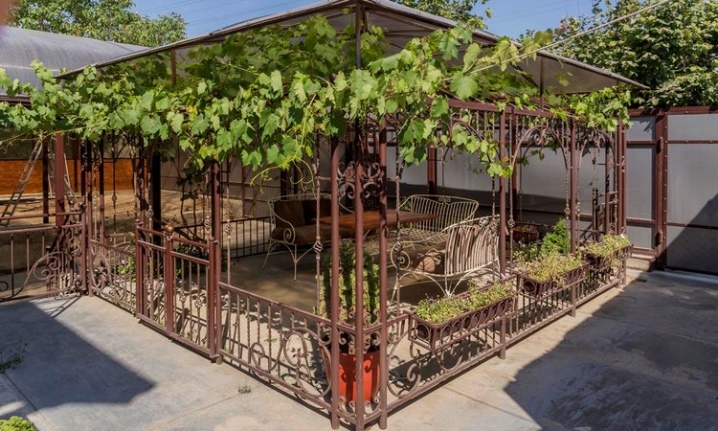
According to landscape designers, the color of the pergola is of great importance in the design of the territory:
- brown is suitable for twigs and green foliage;
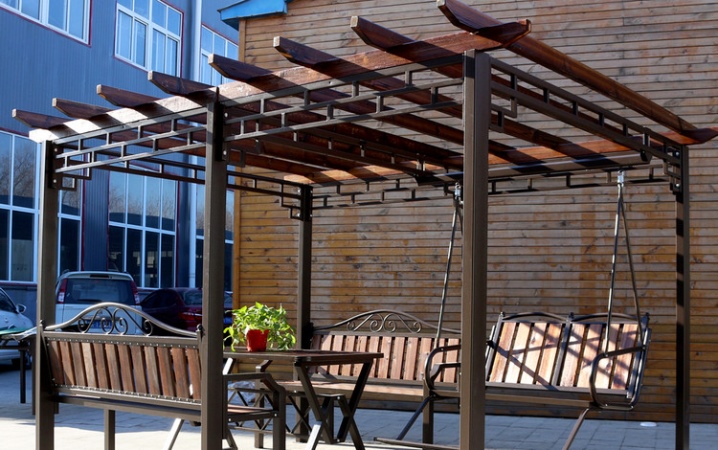
- white gives the impression of lightness and freshness on the site;
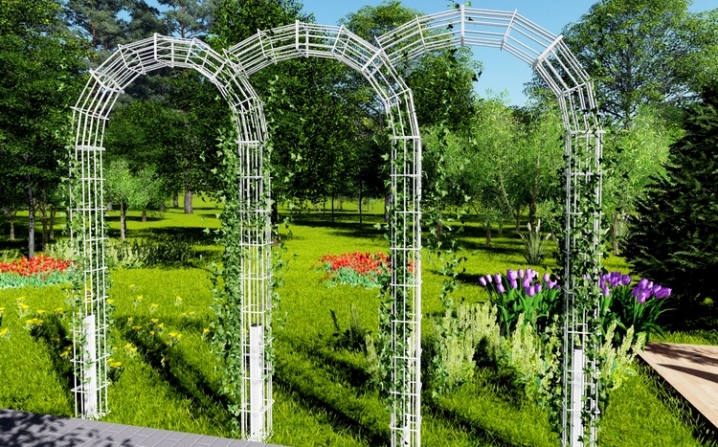
- variegated usually stands out against the general green background.
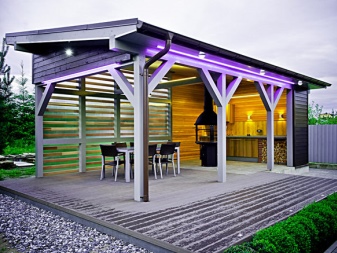

Pergolas are not only a support for vegetation, but also an option for decorating the territory. Nowadays, they are used as a place for outdoor recreation surrounded by grapes, roses or other crops.
During the installation of this structure, it is worth calculating its strength and reliability with a margin so that the structure does not collapse from wind, precipitation or the weight of plants.
For more information on metal pergolas, see the video below.


































































The comment was sent successfully.